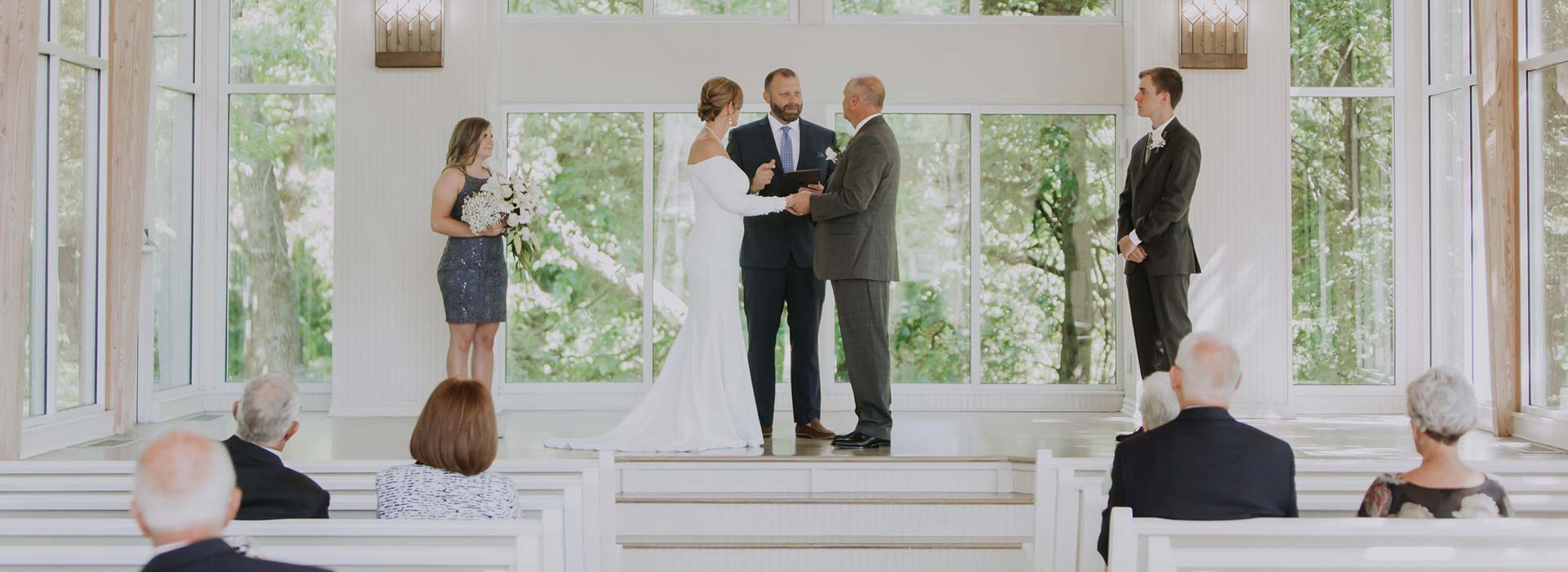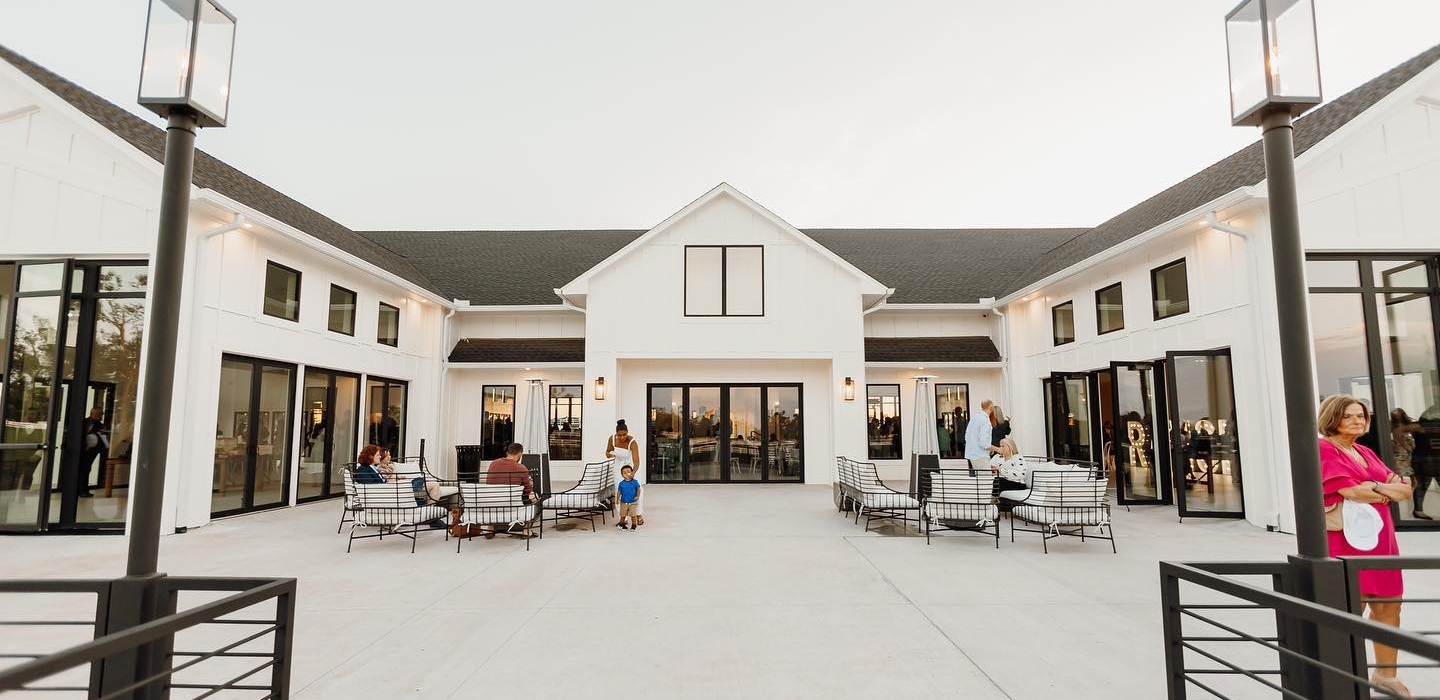The micro wedding trend has been growing in popularity over the last few years, but COVID-19 accelerated its popularity in a big way. Micro wedding, minimony, intimate wedding, etc. — these are some of the most common search terms related to weddings currently, and they’re all over social media. But what does this mean for the wedding industry? It may mean smaller celebrations, but that doesn’t always mean lower wedding budgets. In fact, it could open the door for other business opportunities. Let’s take a look at how the micro wedding trend will impact the future of the wedding industry.
WHAT IS A MICRO WEDDING?
A micro wedding is essentially an intimate affair with a maximum of 40-50 guests that still features all the traditional elements of a standard wedding on a much smaller scale. Wedding party, florals, photographer/videographer, reception celebration with entertainment, etc. — it’s all there, just tailored for a more intimate experience. That means the couple is purposefully wanting to spend more time and budget on smaller and more meaningful details.
That’s not to be confused with a minimony or elopement.
A minimony is a mini-ceremony trend that was born out of necessity with COVID gathering restrictions — and this has been a popular choice for couples wanting to have a commitment ceremony now with a bigger celebration later. A minimony has a maximum of 10-15 guests (couple included) with an officiant and a select few vendors that were part of the originally-planned celebration such as a bridal bouquet, a photographer/videographer, and a small family-style dinner from the caterer.
Here’s what’s important to remember about micro weddings —
- They are not minimony weddings or elopements.
- They have all the elements of traditional weddings but on a purposefully smaller scale.
- They do not necessarily have smaller budgets — they have different budget allocations.
Couples who prefer a micro wedding are often looking to have a meaningful connection with their guests with more one-on-one time and a slower-paced, more luxurious celebration.
WEDDINGS BY THE NUMBERS — OVER THE LAST DECADE
While 2020 has been an unprecedented year for many things, including weddings. Trends for the last decade have been projecting smaller ceremonies and bigger budgets for guest experiences, but this year exponentially increased those numbers.
- In 2009, the average wedding size was 149, with an average budget of $28,285.
That year saw a 5% decrease in budget, which experts attributed to the economic recession of 2008. Formal weddings were down 20% in favor of a more casual affair.
- In 2014, the average wedding size was 136, with an average budget of $31,213.
This year marked the steady growth of personalization, with 40% of couples looking for unique venues that reflect their personality. Spending on the ceremony went down, but spending on the reception increased.
- In 2019 the average wedding size was 131, with an average budget of $33,900.
This year saw a decrease in wedding size as couples focused more on guest-experience. While wedding size went down, budget did not. Another trend from this year was a sequel wedding of having a larger celebration that followed the couples elopement or small ceremony.
(All statistics come from the annual wedding report by The Knot and Wedding Wire. These numbers represent an average across thousands of couples annually across the United States.)
As you can see, the last decade has seen a steady decrease in the guest list, with a stable or increasing budget.
HOW THE MICRO WEDDING TREND WILL IMPACT THE FUTURE OF THE WEDDING INDUSTRY
Micro weddings — or intimate weddings, have been steadily increasing for the last few years, with many industry experts projecting that 2020-2021 would see exponential growth in popularity. And those projections were before the pandemic.
The shared experience of COVID-19 with its quarantine and self-isolation has brought about a renewed value of intimacy and connection with friends and family. By having to reduce most things in their schedule and typical daily routines to a bare minimum of the necessities, people gained a new appreciation for how meaningful smaller celebrations could be, and that will likely continue for many years to come.
In addition to the emotional reasons for micro weddings, there is a new focus on safety. That includes fewer people potentially willing to travel, including elderly relatives and people with children.
Here are four ways the micro wedding trend will impact the wedding industry in the coming years —
- The Sequel Wedding
Even before COVID, small weddings with larger celebrations a little later— termed Sequel Weddings — were on the rise. Many COVID couples are opting for a marry now, celebrate then plan. Vendors are already pivoting to reorganize their 2021 wedding schedule to accommodate new couples, rescheduled couples, and sequel wedding couples.
The Opportunity: This trend could bring with it a slew of new traditions and celebration types which means an opportunity for new products and services from wedding pros. Much like the rehearsal dinner for the wedding, now is a great time to think of what events will likely surround a sequel wedding.
- This Could Mean the End of the Traditional Wedding Season
Before 2020, the majority of weddings took place between May to October, but post-COVID micro wedding trends could mean the end of the traditional wedding season — at least for a little while. With the onslaught of rescheduled weddings and the trend to celebrate in a smaller style, we could be looking at a time of year-round weddings for the next few years, if not more.
This doesn’t just apply to the wedding season (as in the time of year), but also the days of the week. The weekday wedding, popularized during the pandemic, is also likely here to stay for a while.
The Opportunity: Wedding pros may find a larger amount of clients interested in marrying during the “off-season” — which will add to their bottom line. This can also usher in new opportunities for utilizing fresh materials and creating new trends with a larger audience interested in getting married then.
- Couples Going Bigger on Smaller Details
As the statistics show, couples may be inviting fewer people, but they are still spending the same amount. A micro wedding doesn’t mean micro-budget. Couples who want a micro wedding are often looking to go bigger on the small details. Elements such as paying for hotel rooms for all their guests or doing a pre-wedding guest brunch or a full-scale spa weekend and other things like multi-day celebrations with more guest experiences that suite their personality and lifestyle are where people want to invest.
The Opportunity: This means that wedding pros can dive deep and create high-end offerings for their micro wedding clients. Luxe-touches in the wedding design and personalized, meaningful favors, etc., means there will be opportunities to help clients create a highly customized celebration.
- Rethinking the Ways Spaces Are Used
Micro weddings may not mean a smaller budget, but they do mean a smaller, more intimately designed wedding space. This trend will bring about more venue opportunities because large spaces aren’t necessarily needed. The traditional event layout won’t have the same effect for a micro wedding, and space planning will need a refresh.
The Opportunity: The need for a space-planning refresh means the wedding industry will get reinvigorated with creative ideas for not just event space design, but also decor, and event flow, food, etc. Look for opportunities to create new services around a couple’s desire for a wedding that brings people together in a more intimate setting.
It’s important to look deeper into the goals couples have for a smaller, more intimate weddings — and create products or services that help them reach those goals. There is a great opportunity for growth by meeting the needs of couples looking to go big with small celebrations.
For more wedding industry news, check out how these wedding businesses are using technology to pivot during COVID.
__
Written by Corrie McGee
Photo by Emily Barbee Photography





